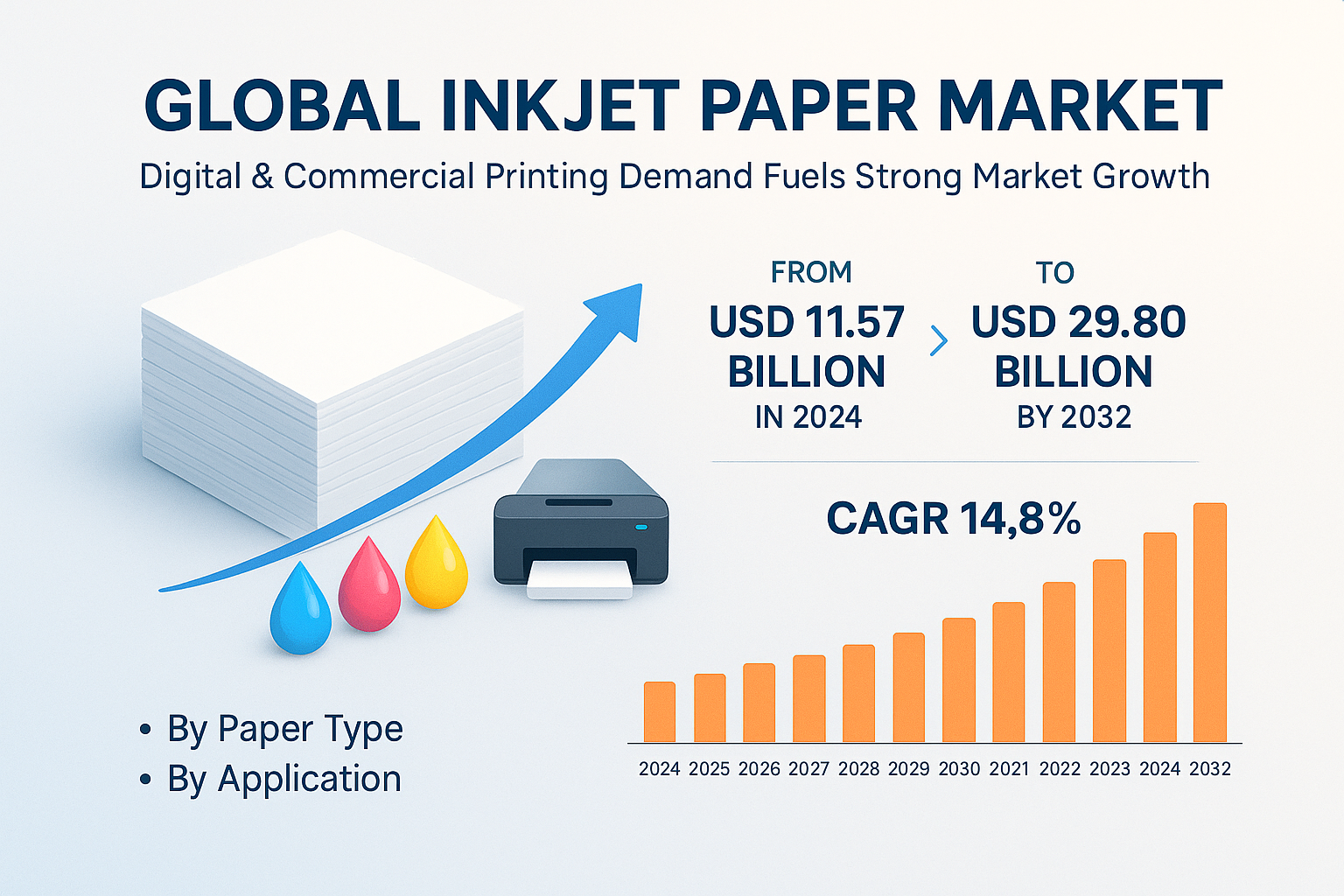Memory IC Market Size, Share, Key Players, Forecast 2025-2032
Memory IC Market — Definition & Overview
Memory ICs (integrated circuits) refer to semiconductor chips used to store data — both volatile (like DRAM) and non-volatile (like NAND flash, NOR flash, embedded memory, etc.). The Memory IC Market comprises design, manufacturing, and supply of these chips, their integration into devices (smartphones, computers, servers, consumer electronics, IoT devices, automotive electronics, data-center storage, etc.), and aftermarket demand (upgrades, replacements, embedded use in industrial applications).
As digitalization accelerates — driven by smartphones, cloud computing, data centers, IoT proliferation, AI workloads, automotive electronics, and consumer electronics — demand for memory ICs becomes central. Memory ICs are foundational components for storage, caching, buffering and data processing across a vast range of devices and services.
Request Free Sample Report:
https://www.stellarmr.com/report/req_sample/Memory-IC-Market/1994
Key Market Growth Drivers & Opportunities
• Explosion in Data Generation, Cloud & Big-Data Services
With increasing use of cloud computing, streaming services, social media, IoT sensors, and enterprise data storage — data generation and storage requirements are surging globally. This creates robust demand for memory ICs (both DRAM for processing and NAND for storage), fueling growth in memory manufacturing.
• Rising Demand from Smartphones, Consumer Electronics & Mobile Devices
Smartphones, tablets, laptops, smart TVs, wearable devices — all rely heavily on memory ICs. As consumer demand for high-performance, feature-rich devices grows, manufacturers require more memory per device, boosting memory-IC consumption.
• Growth in Data Centers, Servers, AI/ML Workloads & Enterprise Infrastructure
Enterprise demand for servers, high-performance computing, AI/ML data-processing, virtualization and cloud services drives large-scale memory requirements. Memory ICs are critical in enabling high-speed data access and storage for these applications.
• Increase in Embedded & Automotive Electronics — IoT, Automotive, Smart Devices
Embedded memory in automotive systems, industrial equipment, smart appliances, IoT devices and connected products boosts demand for specialized memory ICs — often non-volatile, reliable under various conditions, and tailored for embedded applications.
• Technological Advancements, Higher Memory Densities & Cost-Efficiency Gains
Advances in semiconductor manufacturing (smaller nodes, 3D NAND, higher-density DRAM, packaging innovations) allow more storage capacity per chip at lower cost, making memory ICs more affordable and enabling their broader adoption across devices and applications.
What Lies Ahead: Emerging Trends & Market Dynamics
Shift to High-Density, High-Performance Memory (3D NAND, LPDDR, HBM, etc.) — As data loads increase, demand for high-density and high-speed memory solutions (for servers, AI, graphics, mobile) will grow.
Memory Demand in AI, ML, Big Data & Cloud Infrastructure — As AI / ML workloads expand, memory demands for large-scale data processing, model training and inference will increase.
Embedded and IoT Memory Growth — for Automotive, Industrial, Connected Devices — Growth of IoT, smart devices, connected cars, industrial automation will boost embedded memory IC demand.
Increasing Use of Non-Volatile Memory (NAND, Flash) for Storage-heavy Applications — For data storage, edge devices, mobile devices, SSDs — demand for NAND and other non-volatile memories will rise.
Global Supply-Chain Expansion, Diversification & Memory IC Production Scaling — Memory IC manufacturers may expand capacity and diversify production footprint to meet rising global demand and manage supply-chain risks.
Segmentation Analysis
The memory-IC market can be segmented along the following lines:
By Memory Type
Volatile Memory: DRAM (Dynamic RAM), SRAM, etc.
Non-Volatile Memory: NAND Flash, NOR Flash, eMMC, UFS, embedded NOR/NAND, other flash technologies
Specialized / High-Performance Memory: LPDDR (mobile memory), HBM (High Bandwidth Memory), 3D NAND, SSD memory modules
By End-Use Industry / Application
Consumer Electronics (smartphones, tablets, laptops, smart TVs, wearables)
Data Centers & Cloud Infrastructure (servers, storage arrays, networking)
Automotive & Automotive Electronics (infotainment, ADAS, control systems)
IoT & Embedded Systems (smart sensors, industrial controls, home automation)
Enterprise & Industrial Equipment (workstations, industrial PCs, industrial control systems)
Storage Devices & Peripherals (SSDs, memory cards, USB drives)
About us
Phase 3,Navale IT Zone, S.No. 51/2A/2,
Office No. 202, 2nd floor,
Near, Navale Brg,Narhe,
Pune, Maharashtra 411041
sales@stellarmr.com
Memory IC Market Size, Share, Key Players, Forecast 2025-2032
Memory IC Market — Definition & Overview
Memory ICs (integrated circuits) refer to semiconductor chips used to store data — both volatile (like DRAM) and non-volatile (like NAND flash, NOR flash, embedded memory, etc.). The Memory IC Market comprises design, manufacturing, and supply of these chips, their integration into devices (smartphones, computers, servers, consumer electronics, IoT devices, automotive electronics, data-center storage, etc.), and aftermarket demand (upgrades, replacements, embedded use in industrial applications).
As digitalization accelerates — driven by smartphones, cloud computing, data centers, IoT proliferation, AI workloads, automotive electronics, and consumer electronics — demand for memory ICs becomes central. Memory ICs are foundational components for storage, caching, buffering and data processing across a vast range of devices and services.
Request Free Sample Report:https://www.stellarmr.com/report/req_sample/Memory-IC-Market/1994
Key Market Growth Drivers & Opportunities
• Explosion in Data Generation, Cloud & Big-Data Services
With increasing use of cloud computing, streaming services, social media, IoT sensors, and enterprise data storage — data generation and storage requirements are surging globally. This creates robust demand for memory ICs (both DRAM for processing and NAND for storage), fueling growth in memory manufacturing.
• Rising Demand from Smartphones, Consumer Electronics & Mobile Devices
Smartphones, tablets, laptops, smart TVs, wearable devices — all rely heavily on memory ICs. As consumer demand for high-performance, feature-rich devices grows, manufacturers require more memory per device, boosting memory-IC consumption.
• Growth in Data Centers, Servers, AI/ML Workloads & Enterprise Infrastructure
Enterprise demand for servers, high-performance computing, AI/ML data-processing, virtualization and cloud services drives large-scale memory requirements. Memory ICs are critical in enabling high-speed data access and storage for these applications.
• Increase in Embedded & Automotive Electronics — IoT, Automotive, Smart Devices
Embedded memory in automotive systems, industrial equipment, smart appliances, IoT devices and connected products boosts demand for specialized memory ICs — often non-volatile, reliable under various conditions, and tailored for embedded applications.
• Technological Advancements, Higher Memory Densities & Cost-Efficiency Gains
Advances in semiconductor manufacturing (smaller nodes, 3D NAND, higher-density DRAM, packaging innovations) allow more storage capacity per chip at lower cost, making memory ICs more affordable and enabling their broader adoption across devices and applications.
What Lies Ahead: Emerging Trends & Market Dynamics
Shift to High-Density, High-Performance Memory (3D NAND, LPDDR, HBM, etc.) — As data loads increase, demand for high-density and high-speed memory solutions (for servers, AI, graphics, mobile) will grow.
Memory Demand in AI, ML, Big Data & Cloud Infrastructure — As AI / ML workloads expand, memory demands for large-scale data processing, model training and inference will increase.
Embedded and IoT Memory Growth — for Automotive, Industrial, Connected Devices — Growth of IoT, smart devices, connected cars, industrial automation will boost embedded memory IC demand.
Increasing Use of Non-Volatile Memory (NAND, Flash) for Storage-heavy Applications — For data storage, edge devices, mobile devices, SSDs — demand for NAND and other non-volatile memories will rise.
Global Supply-Chain Expansion, Diversification & Memory IC Production Scaling — Memory IC manufacturers may expand capacity and diversify production footprint to meet rising global demand and manage supply-chain risks.
Segmentation Analysis
The memory-IC market can be segmented along the following lines:
By Memory Type
Volatile Memory: DRAM (Dynamic RAM), SRAM, etc.
Non-Volatile Memory: NAND Flash, NOR Flash, eMMC, UFS, embedded NOR/NAND, other flash technologies
Specialized / High-Performance Memory: LPDDR (mobile memory), HBM (High Bandwidth Memory), 3D NAND, SSD memory modules
By End-Use Industry / Application
Consumer Electronics (smartphones, tablets, laptops, smart TVs, wearables)
Data Centers & Cloud Infrastructure (servers, storage arrays, networking)
Automotive & Automotive Electronics (infotainment, ADAS, control systems)
IoT & Embedded Systems (smart sensors, industrial controls, home automation)
Enterprise & Industrial Equipment (workstations, industrial PCs, industrial control systems)
Storage Devices & Peripherals (SSDs, memory cards, USB drives)
About us
Phase 3,Navale IT Zone, S.No. 51/2A/2,
Office No. 202, 2nd floor,
Near, Navale Brg,Narhe,
Pune, Maharashtra 411041
sales@stellarmr.com












